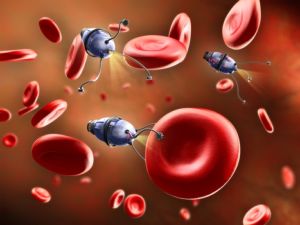
Over the past few months, there have been a number of developments in the already fascinating world of robotics.
On October 6th, three European scientists were awarded the Nobel Prize in chemistry for their work developing nanoscale machines – the world’s smallest robots. These molecule-sized robots are manipulated through the conversion of chemical energy into mechanical energy. Many believe that nano-machines may have important implications in a variety of fields, including medicine.
In fact, as Hannah Devlin of The Guardian points out, “the technology is already being used to create medical micro-robots and self-healing materials that can repair themselves without human intervention.” Paul Rincon, science editor at BBC News, similarly discusses the potential of these tiny machines, noting, for example, that nano-machines could be essential for the development of more effective and localized cancer treatments.
Meanwhile, a team of Harvard scientists, headed by Kevin Kit Parker, recently developed an extraordinary “artificial creature” by combining heart muscle cells with silicone and metal. As Elizabeth Pennisi at Science magazine explains, by using biological material, the stingray-like robot is responsive to light and is more energy efficient.
Many are also hopeful that this development, along with a similar project at Case Western Reserve University utilizing sea slug cells to build a robot, could potentially lead to the development of an artificial human heart.
There are many exciting developments taking place, which means a number of helpful resources for students, teachers, and the generally curious.
For anyone interested in learning more about nanoscale machines, this January 2016 Royal Institution lecture from Neil Champness, Professor of Chemical Nanoscience, is a helpful and informative resource.
Additionally, these two videos from Discovery News and How Stuff Works break down the science necessary to combine biological and robotic material, along with the potential uses of this research.

 Subscribe
Subscribe


 See More ATE Impacts
See More ATE Impacts

Comments
There are no comments yet for this entry. Please Log In to post one.